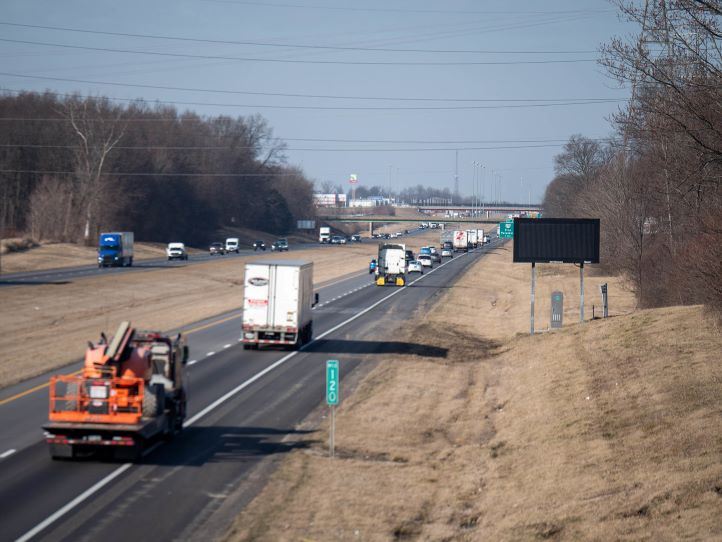COLUMBUS — Ohio Gov. Mike DeWine and Ohio Department of Transportation (ODOT) Director Jack Marchbanks have announced the launch of a new initiative that will use technology to detect traffic congestion and warn drivers of dangerous slow-downs.
The new warning systems will be installed at 13 highway sites in and around major urban centers that have been identified by ODOT as high-congestion, high-crash areas, according to a news release.
When cameras at these sites detect slow or stopped traffic, they will automatically trigger a message board a few miles away to alert approaching drivers of the upcoming traffic hazard. Alerts will also be pushed to OHGO and other traffic apps.
“As technology continues to evolve, we’re always looking for new ways to help prevent serious and fatal crashes on our highways,” DeWine said. “Although we’re confident that these warning systems will help prevent crashes, there is still no substitute for safe driving. For these signs to be effective, drivers must be paying attention.”
The new warning systems are specifically geared at reducing deadly “end-of-queue” crashes that occur when highway drivers fail to recognize slowing or stopped traffic, resulting in a collision with vehicles at the end of the slow-down.
According to ODOT, end-of-queue highway crashes have been increasing over the past three years to 8,811 crashes in 2023. Once the technology is installed at all 13 sites, ODOT anticipates it will help reduce these rear-end crashes by at least 16%, which equates to a reduction of around 1,400 crashes.
ODOT activated the first of these 13 automatic traffic queue warning systems this morning on I-70 westbound at State Route 310 in Licking County near the site of the November 2023 fatal rear-end crash involving a charter bus carrying students from the Tuscarawas Valley Local School District. All 13 sites were selected based on factors such as traffic congestion and the number and severity of rear-end crashes.
The automated traffic queue warning systems use similar technology to ODOT’s wrong-way driver detection systems currently in place in Cincinnati, Dayton and Columbus that alert drivers who mistake exit ramps for on-ramps.
So far, these systems have detected nearly 300 wrong-way drivers, according to ODOT.
“I’m incredibly proud of the efforts our team has made to ensure Ohio is leading the way when it comes to deploying these new resources,” Marchbanks said. “These new warning systems, combined with Ohio’s toughened distracted driving laws, will surely save lives.”
Provisional crash data from the Ohio State Highway Patrol indicates that Ohio’s new distracted driving laws are influencing safer driving behavior. In 2023, there were more than 15,500 fewer traffic crashes as compared to 2022 and approximately 46,500 fewer crashes when compared to 2019.
“Education of distracted driving, along with this technology, will help achieve our mutual goals of increasing safety on our roads and reducing serious crashes,” said Colonel Charles A. Jones, Ohio State Highway Patrol superintendent. “We, as troopers, take it to heart that our job every day is to ensure that motorists make it home to their families, and we make it home to ours.”
When accounting for the time necessary to run needed electrical and broadband infrastructure to the 12 remaining automated warning system sites, ODOT expects all systems to be operational within two years. ODOT is also evaluating highway locations in other parts of the state that could benefit from the new technology.
Born in Pine Bluff, Arkansas, and raised in East Texas, John Worthen returned to his home state to attend college in 1998 and decided to make his life in The Natural State. Worthen is a 20-year veteran of the journalism industry and has covered just about every topic there is. He has a passion for writing and telling stories. He has worked as a beat reporter and bureau chief for a statewide newspaper and as managing editor of a regional newspaper in Arkansas. Additionally, Worthen has been a prolific freelance journalist for two decades, and has been published in several travel magazines and on travel websites.















Uhh… You mean 2 tell Me👻 that the State (Ohio) that gets More Federal Highway Funds than the next 3 closest ones combined… Duzn’t have this technology ALREADY?
The State that has MILE LONG entrance & exit ramps for every freeway…
Duzn’t have that technology already?
HARD 2 BELIEVE.